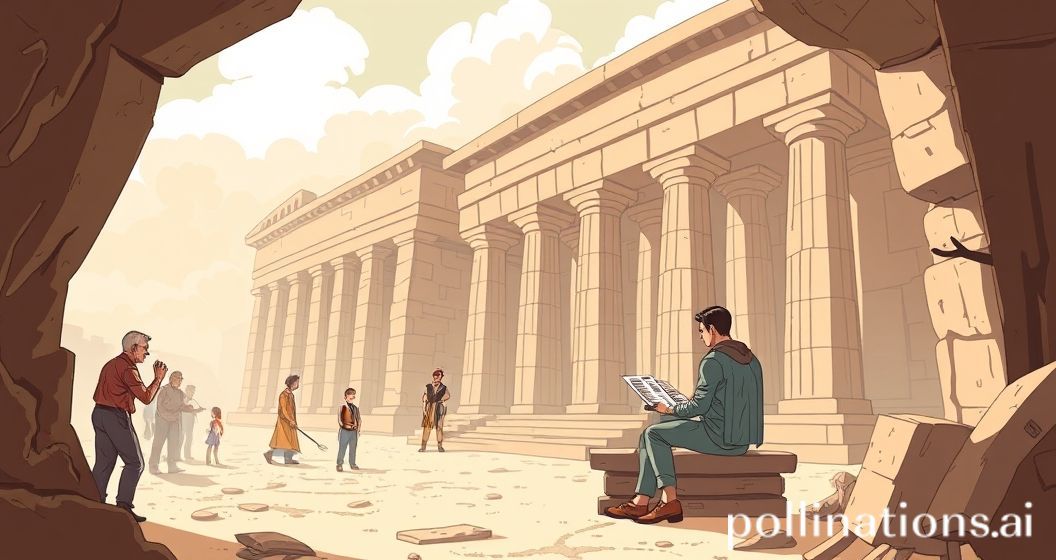Archeology Greatest Fraud – For more than 40 years; 40 years, the Piltdown skull bones fooled the archaeological science establishment. Once, it had been the most spectacular discovery filling ‘the missing link’ between modern humans and our ape-like ancestors. An awaited solution to Darwin’s evolution of species.
Oh dear fooleries, fascinating and bitter, whom shall your tales befriend but the curious humans? In 40 years, it would all be an utter lie, the fossils turning into a hoax, jolting scientists left and right. Piltdown man goes down as one of the most enigmatic, successful, and celebrated fraud cases that has seen light on this Earth. A study in Piltdown The first scene of this tale opens at Barkham Manor in Piltdown, a village near East Sussex in England.
Digging deeper and deeper into the Wealden gravel around the manor grounds, the workers who were tasked with repairing roads, sparked the opportunity for discovery, that of parts of a skull and jawbone that oddly belonged together. One Mr.
Charles Dawson, amateur archaeologist, geologist, and lawyer, enters the scene. Like most archaeologists at the time who were enamoured by evolutionary theory, Dawson too naturally fell in line and was deep on the lookout for artifactual remains of prehistoric humans.
He was influential in Sussex, having made several discoveries and contributions to both geology and archaeology. According to him, he had noticed the gravel looked unusual (the presence of brown flints gave it away).
Soon enough, the workers found a fossil bone. Charles Dawson was now sure that he would uncover something remarkable in this gravel pit and spent years searching. Some years go by.
The scene remains in the gravel pits. In 1911, Dawson found a prehistoric human cranium with an ape-like jaw along with some more fossil pieces. Information surrounding the discovery is quite fuzzy as the Piltdown saga investigators are not agreed on a single thread of facts.
What’s certain though is Dawson sent all these fossil pieces to the British Museum (now Natural History Museum) in London, claiming that he found it from the gravel pit. The experts at the museum were all over the moon at this novel discovery — a human-like and ape-like fossil.
It was given the name — the Piltdown Man. At the museum, enter Sir Arthur Smith Woodward, Keeper of Geology.
Dawson worked with him for his studies and further excavation of the site (tooth fossils of hippopotamus, elephant, and more were dug up!). In December 1912, the new fossil hominin: Eoanthropus dawsoni (Dawson’s dawn man), was officially announced to the world. It had been a field day for the media.
The Missing Link When Darwin wrote his revolutionary On the Origin of Species: By Means of Natural Selection, Or the Preservation of Favoured Races in the Struggle for Life (yes, yes, that’s the full title!) in 1859, he did not say that we evolved directly from apes. He had said that both humans and animals share a common ancestor, a fundamental understanding now.
Our new ancestor stood between man and ape. Charles Dawson thought he had found the missing link, which if so, would have transformed palaeoanthropology.
As the braincase of the Dawn man was modern in nature with a lower ape-like jawbone, it was unlike any other human or ape remains we had discovered over the years, falling between apes and humans. Dated to be more than three-million years old, scientists hence believed it was an ancestor between us and apes. Curiosity was in the air.
How did this odd fellow look like? Perhaps an ape-like body but with full human-like consciousness? For two cents, what would Darwin have said? Fake, foolery, prank! This scene is set in a more modern Britain where more than 40 years have passed by. Technological progress and myriad later archaeological finds of prehistoric human fossils drew suspicion to the authenticity of the Piltdown man. It was starting to look uncanny.
Don’t we double check when suspicion lingers around? In 1953, the skull and all its associated fossils were proven to be fakes through fluorine absorption dating. It was found that someone had actually stained the parts of the skulls so it looked older than its actual age.
The teeth in the jawbone (revealed to have belonged to a juvenile orangutan) were filed so it would fit the human part of the skull. The hoaxer was pretty clever with the execution, even placing the skull in the right place at the gravel pits beside other fossils. Whodunnit Well, well, well.
The part we’ve been waiting for. Severe speculations were floating – Dawson, who may have done it for fame; Sir Grafton Elliot Smith or Professor William Sollas who may done it to one up their rival Sir Arthur Woodward; even Martin Hinton, the museum curator in 1912 who used to experiment with staining. To our dismay, no theory stands firm for lack of evidence and the hoaxer remains unidentified.
The lurking neighbour The next scene begins in Crowborough, near Piltdown which was also a neighbouring area to Charles Dawson’s residence. Here lived Sir Arthur Conan Doyle (plot twist!), a neighbour of Dawson who had a keen interest in palaeontology. Amidst the list of suspects was this surprising and awfully familiar name – Sir Arthur Conan Doyle.
Both Dawson and Doyle were members of the same archaeological society and shared similar interests in evolution studies. The fossils were found near to Doyle’s home in Sussex. His physician background, fossil collecting hobby, and eccentric nature quickly turned him a Piltdown suspect.
He also has a history of faking photographs. People began looking, not a single nook and corner was left unsearched. Parallels were found between the novel The Lost World (which was also published in 1912) and the Dawn man.
Academic papers were even written claiming that Doyle was the mastermind behind the hoax. “If you are clever and know your business you can fake a bone as easily as you can a photograph.
”Professor Challenger, from Doyle’s “The Lost World” Time makes one forget things and by the end of the millennium, the era of the puzzling Dawn man had faded. The scene fades to black as the anthropological establishment move from Darwin’s monkeys to new chapters. So how does one remember the past? By telling stories once again like this.


